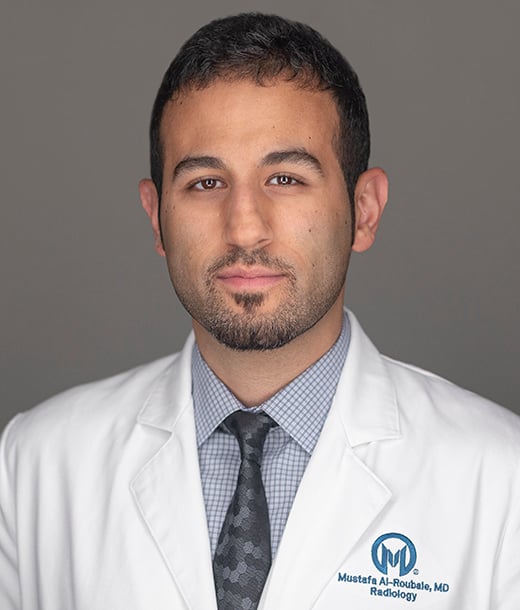
Q&A: Geniculate Artery Embolization (GAE)
Dr. Mustafa Al-Roubaie is a leading interventional radiologist in the Diagnostic Imaging and Interventional Radiology Department at Moffitt Cancer Center. He specializes in innovative minimally invasive procedures that significantly enhance patient quality of life.
We had the opportunity to speak with Dr. Al-Roubaie about the benefits of geniculate artery embolization (GAE).
What is geniculate artery embolization (GAE) and how is the procedure performed?
This is an angiogram procedure that targets the arteries of the knee. We enter the patient’s vascular system using a tiny needle puncture at the groin, and then through that puncture, we use image guidance to direct a long, thin intravascular catheter to the geniculate arteries. These are tiny arteries that supply blood to the lining of the knee joint, called the synovium. In people who have arthritis, the synovium is inflamed and painful. By blocking the arteries that feed the synovium, we reduce the inflammation in that area, and the patient’s knee pain improves.
What type of patients qualify for this procedure?
Patients with knee pain secondary to osteoarthritis should try lifestyle modification treatments like healthy eating (including dietary anti-inflammatories), weight loss and physical therapy to strengthen the muscles around the knee. Over-the-counter knee braces and other support garments are very helpful as well. For patients whose pain persists despite these non-invasive treatments, a course of NSAIDS (anti-inflammatory painkillers) under the direction of a physician can be very helpful.
If knee pain persists despite the treatments mentioned above, we offer knee injection procedures. We use image guidance to inject the knee with medications like lidocaine, steroids and hyaluronic acid. These needle procedures provide temporary relief ranging from one to six months depending on the medication used. For patients whose pain persists despite these procedures, knee replacement surgery is considered the next best option.
Undoubtedly, knee replacement surgery is the most effective and permanent treatment for osteoarthritis related knee pain. However, not all patients are safe candidates for joint replacement surgery, including those with significant cardiopulmonary disease, or patients undergoing cancer treatment. This subset of patients can benefit from GAE.
What is the recovery time?
This is a same-day outpatient procedure. Patients recover for one hour and then go home. They are instructed to not do any heavy lifting for 24 hours, then can resume their normal activities.
How does a patient benefit from receiving a geniculate artery embolization (GAE) vs. other treatment methods?
Patients who have osteoarthritic knee pain despite the conservative therapies listed above should be evaluated by an orthopedic surgeon for knee replacement surgery, as this is the gold standard treatment for knee arthritis. However, for patients who cannot have surgery or do not want surgery, GAE is quickly gaining traction as a worthwhile second option. Early data suggests the success rate to be about 75% and risks of complications are less than 3% (mainly groin access site hematomas).
If you'd like to refer a patient to Moffitt Cancer Center for geniculate artery embolization, complete our online form or contact a physician liaison for assistance. As part of our efforts to shorten referral times as much as possible, online referrals are typically responded to within 24 - 48 hours.

